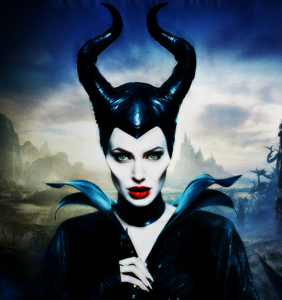film review: maleficent
Trigger warning for discussions of sexual violence
When I was a kid, I was given a Sleeping Beauty doll. She came with pink pouty lips, long lashes, and a switch at the back that made her eyes flutter open and closed – but for all the deluxe features, Disney forgot that women have bendable knee joints. My doll’s legs stuck out straight like a plank; great for whacking my sister, but not so good for play.
Time flies. And somewhere between pre-puberty and now, Disney’s had a change of heart. The protagonist of recent Disney film release Maleficent not only sports a pair of shiny, bendable legs, but powerful wings that carry her farther than my child brain was taught women can go.
Maleficent is a remake of Disney classic: Sleeping Beauty with a fresh perspective. This time, we follow the story’s villain, and learn how she became the evil fairy fearsome enough to cause a generational phobia of spindles. Turns out Maleficent (Angelina Jolie) was once a good fairy, but sunk into the arms of evil after her human companion, Stefan (Sharito Copley), stole her wings. She curses his child, Aurora (Elle Fanning), in a fit of vengeance and maniacal laughter and returns home to her fairy kingdom – ‘the Moors’ – to stew in the darkness of her hate and sadness. She cannot escape the light of Aurora, however, whom Maleficent stalks to in order to track the curse’s impact. Maleficent grows fond of Aurora’s interminable smile and finds purpose in protecting her; she becomes Aurora’s confidante and ‘fairy godmother.’ A reborn, lighter Maleficent tries to undo her curse, and eventually saves Aurora through true love’s first kiss.
A worthwhile message, Maleficent’s journey shows the emotional turmoil latent within us all, and the potentially devastating effects this can have on our self-perception and choices. Themes of obsession and depression will likely resonate with most viewers, with Maleficent’s change affirming our potential to find inner strength, self-forgiveness and to start anew. This message comes at a price, however as Maleficent’s sudden, drastic character development is disjointed and jarring.
The film has some amazing visuals courtesy of director Robert Stromberg, who also produced Avatar and Alice in Wonderland; the vibrant colours of ‘the magical Moors’ draw you into dreamlike landscape. Jolie is magnificent; there’s a case to be made for seeing Maleficent if only to witness her managing to infuse an hour’s worth of closeup stares with a different and nuanced emotion each time.
The real highlight of this film, however, is the positive feminist message at its core. Maleficent follows in the footsteps of Frozen and Brave, breaking with convention to show female characters as their own saviours, and that true love comes in various forms: between mothers and daughters, sisters, and in this case, unexpected friends. Disney’s got a trend going, and it kicks ass. Maleficent herself is powerful, intelligent, charismatic, and capable of both intensely positive and negative emotions. Her character puts the writers of Snow White and Cinderella to shame, as though Disney is seeking redemption for 70 years of Bechdel sins all in one hit.
It would be easy to get swept up in a feminist hurrah for this film, if it weren’t for the characters in Maleficent’s shadow. As though hashed up to compensate for the feminist lead, there’s the ‘token figure of virtue and simplicity’ in Aurora, who is prized foremost for her beauty and spends most of the film in ignorant silence, and three bumbling female carers too empty-headed to realise that babies need food to live. The film tries to incorporate themes of consent by having the prince express discomfort with kissing a sleeping Aurora, but ultimately the writers preference sticking to the original tale over following this thought through; the prince goes ahead and kisses Aurora regardless.
Matt Zoller Seitz argues that Maleficent contains an underlying message about the impact of rape, interpreting the theft of Maleficent’s wings as a metaphor for sexual violence. Although this reading is plausible — especially considering that some variants of the original fairy tale involved the rape of Aurora — it is in no way made explicit. If it is to be interpreted in this way, the film subverts the original tale as Maleficent aims to overcome her struggle through personal strength and the support of other women. Though this subtext is not necessarily overt, audiences should be warned that viewed in this light some scenes may be triggering.
Disney’s come a long way since I was a kid, though there’s still a long way to go where feminism’s concerned. That said, they are indeed working to make an ‘old story anew’ with Maleficent, inspiring young girls and women to challenge sexist conventions and reclaim their wings.


